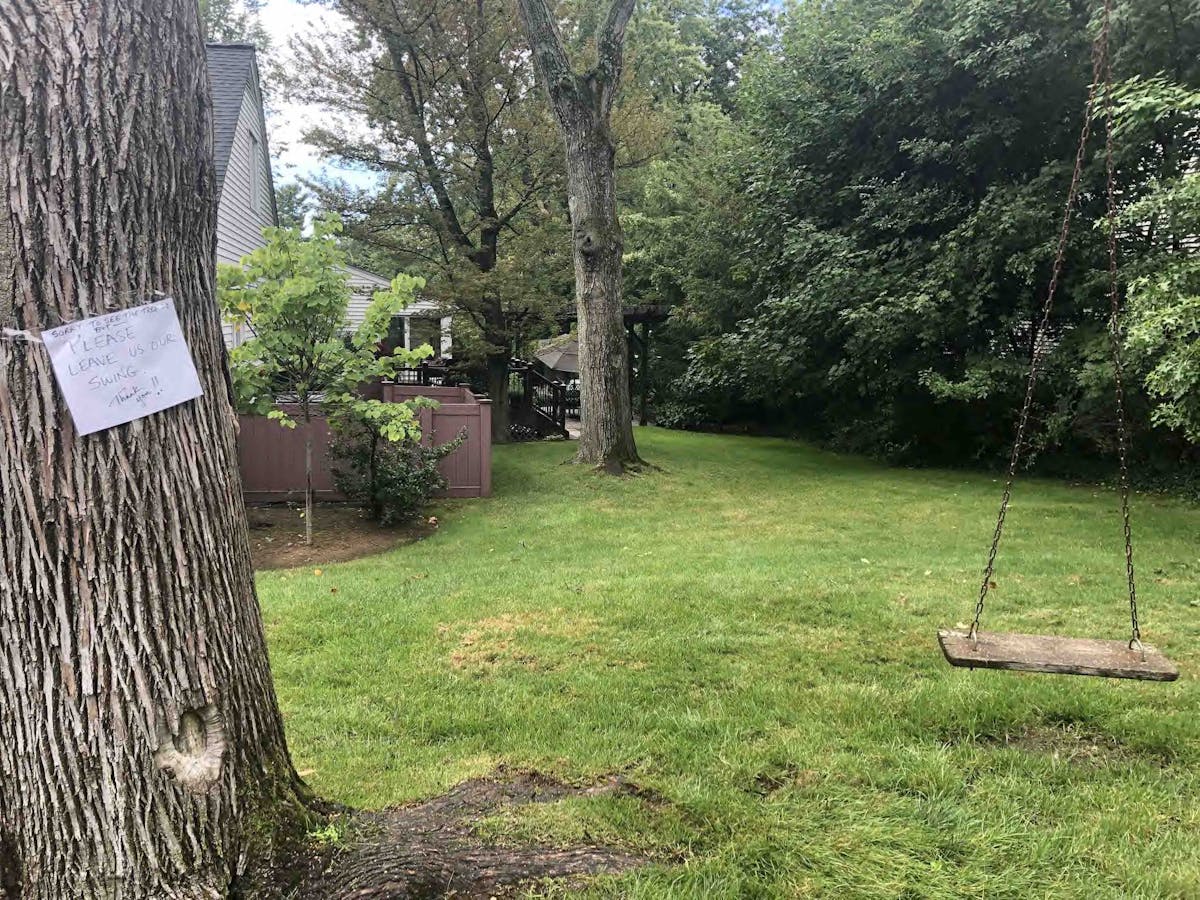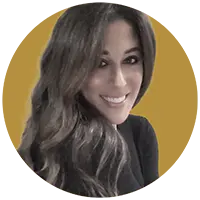Weekend Essay: Eulogy for a Tree Swing
We enter into relationships with things, layering them with memories and meaning and allowing them, in turn, to define us. They become symbols and touchstones of our values.

“Someone to whom I can tell all my stories.” That was what, once upon a time, I told an ex-boyfriend when he asked what I was hoping to find in a partner.
Years later, I’d amend the statement to include a whole bunch of characteristics pertaining to our partnership’s capacity for kindling kindness, loyalty, and maturity, but the initial sentiment still holds true. I want us — my forever person and I — to be a dream and thought repository for one another.
And yet, in consideration of storytelling’s golden rule, “show, don’t tell,” I wonder how best to relay who I am, who I was, and from whence I came. I wonder how I can tell my stories — to show a man my heart and home — when, as just happened, parts of it are threatened with extinction or, in fact, disappear.
Last week, the department of public works of the township of Teaneck, New Jersey descended on my parents’ lawn, announcing plans to remove our yard’s mightiest tree, which just so happens to anchor my childhood swing.
A feat of delicate engineering and, in my father’s own words, “a combination of genius and coordination,” the wooden plank seat and chain link on either side connect to a single, much longer chain, which he managed to pitch over a sky-high branch on some long-ago Sunday.
Over the years, what was initially my swing became our swing — I have pictures of all twelve of my nieces and nephews on it. Sitting as it does at the edge of our property, it beckons to neighborhood adults and children alike.
During the pandemic, the lady next door would take up temporary residence on the swing, making her daily calls from the swing’s gently oscillating perch. The family across the street arranged itself around it for formal bar mitzvah photos, and last weekend, my nephew’s friends walked across town, wandering the neighborhood in search of him, landing at my parents’ property once the landmark tree-swing came into view.
When my mother informed the family that the town had begun the process of removing the tree, my otherwise ordinary Thursday was thrust into a state of panic. I had always imagined that, one day, my own kids would sit on their grandparents’ laps and gleefully squeal at the swing’s chaotic pendulum. I had always imagined bringing someone home and showing him the fixtures of my youth that ferried me to the present so that he could really see and know me.
My parents think my reaction — which, in addition to a torrent of tears, included frantic calls and emails to Teaneck’s deputy mayor, Elie Katz, the Department of Public Works, and the city’s head tree supervisor — has been disproportionate. They seem to think that I have an unhealthy attachment to inanimate objects.
Do I, though?
It seems to me that we enter into relationships with things, layering them with memories and meaning and allowing them, in turn, to define us. It seems that there is a category of things that evolve beyond their utility, becoming symbols and touchstones of our values.
This, really, is the thing over which I’ve been puzzling since the announcement of our tree swing’s uncertain future. How much of us is located within? How much of our essence is communicable through the telling part of storytelling, and how much is dependent upon the showing? What is a person, really? A collection of memories and ideas; an assembly of things in space that represent the stages and associations that comprise the whole; or, perhaps, some combination of the two?
When your family and childhood home are so much a part of who you are and what you most cherish, how do you fully announce yourself to the world — to new friends and partners — when the only available tour of your past is one through ruins and remnants? How do I demonstrate the ferocity of our family’s love for one another when the gathering place is changing and the gatherings, especially with adult siblings now spread across the globe, are fewer and farther between?
There’s less magic in the description of all-night Monopoly games, holiday barbecues, and my brothers’ “Feats of Strength” lunacy — think a poor man’s ancient Olympic trials — than in the experience of those things. All that anyone might glean from the retelling is how much I miss them.
It feels like time is forever sweeping its hand across the elements in the portrait of our lives — the homes, people, and things we love — and, like water over rocks, is altering and altogether disappearing them.
Maybe, though, in a world in which our lives’ beloved trappings are at the mercy of unforeseen circumstances like changes in public works regulations and hurricanes, all we can dependably offer to demonstrate who we are are expressions of what we love and once loved.
I never really knew my grandfather, but I’ve been raised with his voice in my ear. Among other things, he is the reason we value education above all else; the reason we’re supposed to mend things rather than discard them; the reason we value words and are attentive to etymology and the intertwining roots of different languages; the reason we’re not deeply interested in wealth. Though I can’t remember him, I recognize the sort of wisdom and elegance that characterized his presence.
My mother told the story of her father and expressed her love for him in such a way that he was, somehow, part of our home. I know that he was one of the great foundations of her life because she told and showed me so, in many ways, over and over again.
I suppose that knowledge and this latest episode of lesser loss are forcing a shift. Sometimes, when I’m home alone, walking through my parents’ empty house, I feel the absence of the kids and lives that once made it a raucous place, as if the space is cast in some sort of perpetual fade. During this last visit, though, I noted newly framed paintings in the front hallway, an unprecedented level of greenery in the kitchen, and a new, elegant glass container for my mother’s homemade vanilla.
Suddenly, as I lay on the couch, gazing at recent years’ touches of beauty and renovations, it struck me that the place is alive with change and has been in an ongoing state of change throughout our lives. All of which is to say, it’s still, much as ever, alive.
Perhaps I’d do well to remember that our lives are ruled by the Law of Conservation — energy can neither be created nor destroyed, only transformed from one form to another. This is how, without his actual presence in my life, I came to know my grandfather through his daughter, and this is how, no matter what else is lost, others will come to know who we are and what we’ve loved. Our storytelling will just have to be some hybrid of what was, what is, and what may still be, a reflection of the energetic thread that runs through the life of a family.
As of this writing, the public works department remains set on its plans to remove our tree, though the superintendent has promised to drive by for a site visit before finalizing the deathknell liability assessment with our town’s legal team. My parents have pledged to conceive of some replacement contraption for the swing. For my part, despite the fresh, healthy, perspective-rich thinking I’ve shared in this piece, I can’t seem to stop crying.
When I texted a friend about our tree swing’s impending demise and my grief over its absence from our family’s future, he said, “Maybe, one day, you’ll make your own swing for your kids and explain its inspiration.”
I guess that will have to do.

